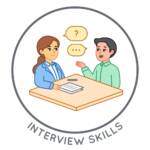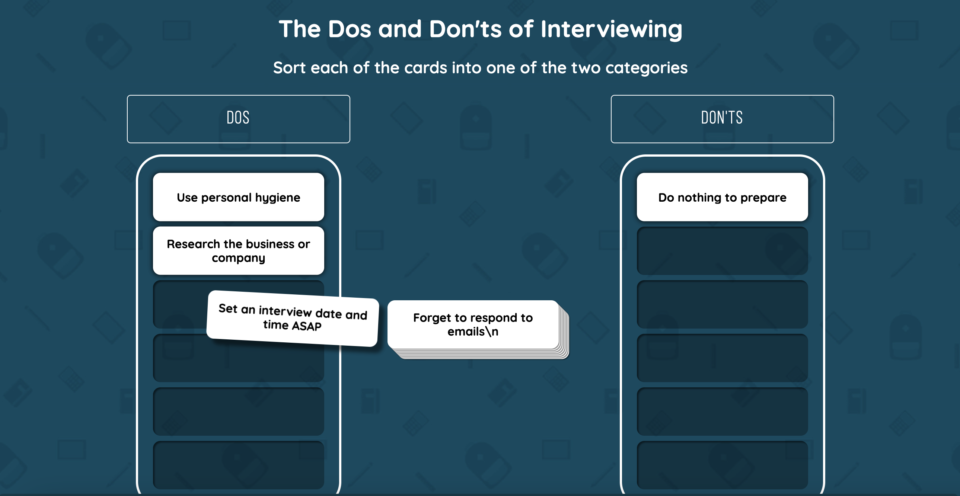
Preparing high school special education students for job interviews is a crucial step in their transition to the workforce. Understanding appropriate interviewing behaviors can significantly impact their success in securing employment. An effective way to teach these skills is through an interactive worksheet that sorts the dos and don’ts of interviewing behaviors. This blog post will provide educators with a job interviewing activity for special education transition programs.
Why Job Interview Skills Matter
Job interview skills are essential for students in special education transition programs because:
- They build confidence.
- They enhance communication skills.
- They promote independence.
Introducing the Interactive Worksheet
The interactive worksheet asks students to sort the dos and don’ts of interviewing behaviors into two columns. This hands-on activity makes learning engaging and memorable, helping students to internalize the key aspects of a successful job interview.

Lesson Plan: Job Interviewing Activity for Special Education Transition Programs
Objective
By the end of the lesson, students will be able to identify the dos and don’ts of job interviewing.
Materials Needed
- Interactive worksheet (or printable)
- Whiteboard and markers
- Sample job interview questions
- Role-play scenarios
Duration
45-60 minutes
Activity Steps
1. Introduction (5 minutes)
Start by discussing the importance of job interview skills. Explain that understanding the dos and don’ts can make a big difference in their job search success. Share some basic tips about first impressions, such as dressing for the job and arriving on time.
2. Distribute the Worksheet (5 minutes)
Hand out the interactive worksheet to each student. Explain that they will be sorting various behaviors into two columns: “Dos” and “Don’ts.”
3. Explain the Behaviors (10 minutes)
Review the behaviors listed on the worksheet. Discuss why each behavior is either a do or a don’t.
4. Sorting Activity (15 minutes)
Give students time to complete the worksheet. Encourage them to think critically about each behavior and discuss their choices with a partner or small group.
5. Review and Discuss (10 minutes)
Go over the worksheet as a class, discussing each behavior and why it is important. Use the whiteboard to create a master list of dos and don’ts based on student input.
6. Role-Playing Scenarios (10 minutes)
Divide students into pairs and assign them different interview scenarios. Have them practice interviewing each other, focusing on applying the dos and avoiding the don’ts. Provide sample job interview questions to guide their practice.
Unlock all of our job training resources by signing up for your free trial today – no credit card required!
Access the full Social Communication Curriculum HERE!
Instant access to thousands of no-prep social skills activities, over 1000+ video lessons, and engaging games designed to enhance learning and development.
Conclusion
Preparing high school special education students for job interviews is an essential part of their transition to the workforce. The interactive worksheet activity and accompanying lesson plan outlined in this post provide a structured and engaging way to teach the dos and don’ts of interviewing behaviors. By incorporating these strategies into your classroom, you can help your students build confidence, improve their communication skills, and increase their chances of securing employment. For more resources and tips on supporting special education transition programs, stay tuned to our blog.
Sample Video
Try out this sample animated video lesson.
We offer our entire Social-Emotional Learning platform free for 14 days here!
Related Blog Posts:
Job Training Resources for Special Education Students
No-Prep High School Lessons to Teach Job Skills
Social Communication Curriculum

